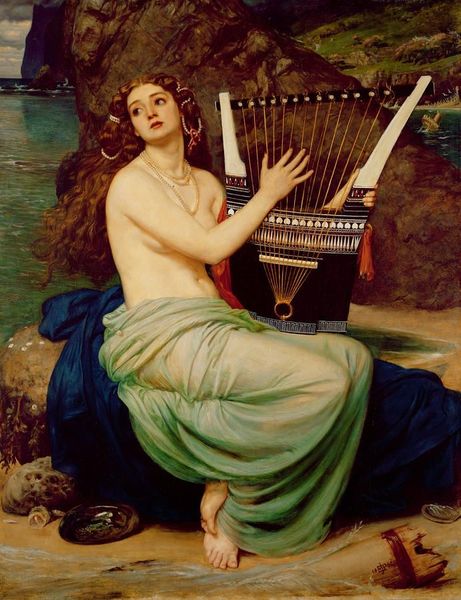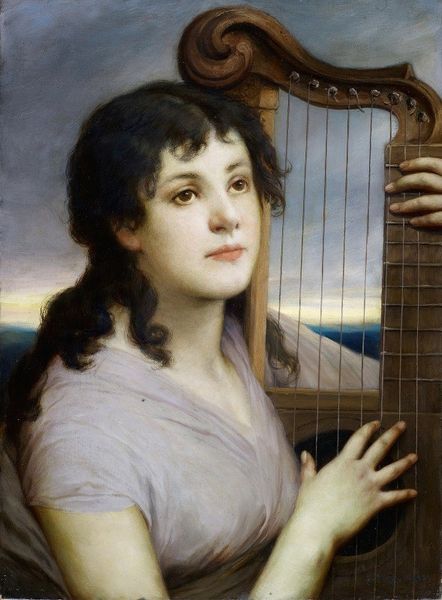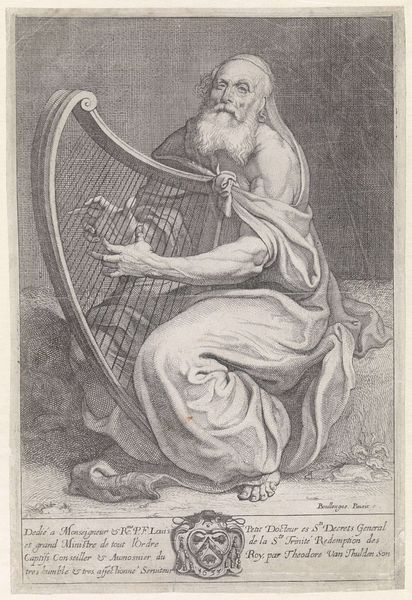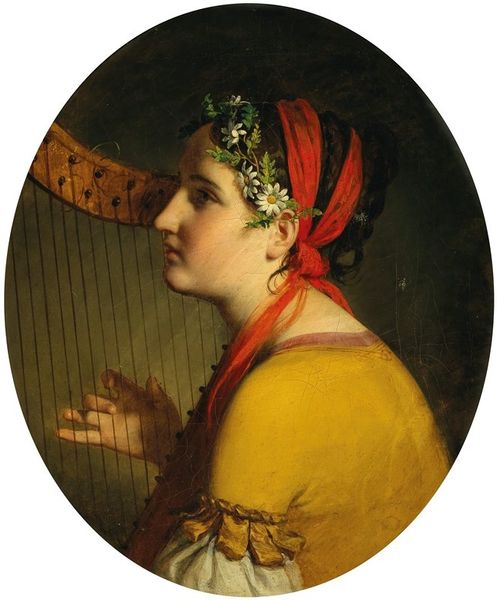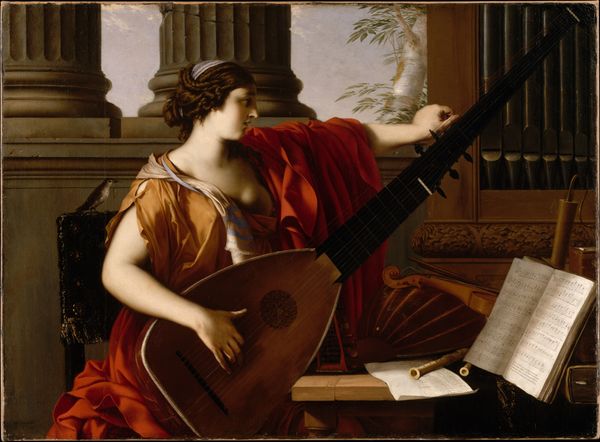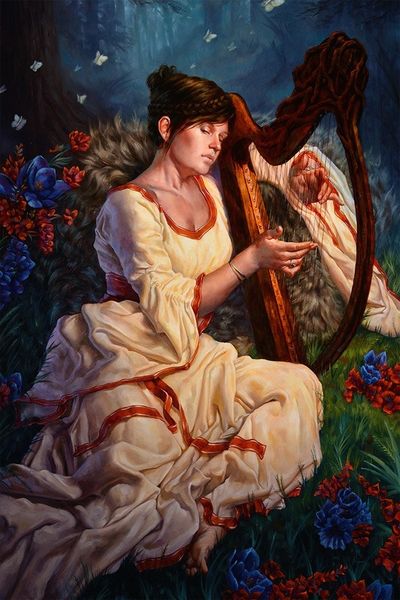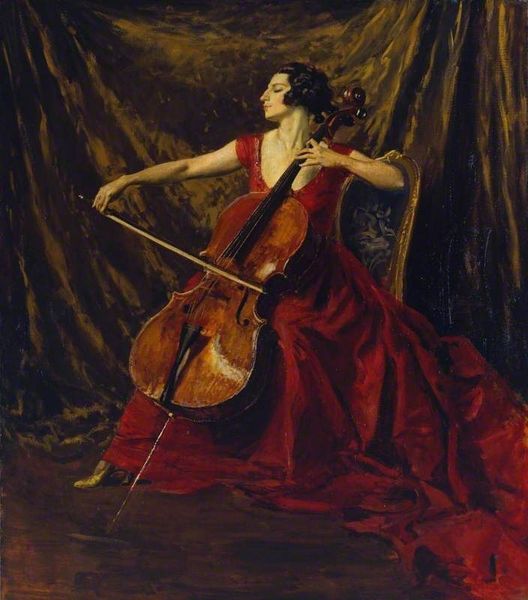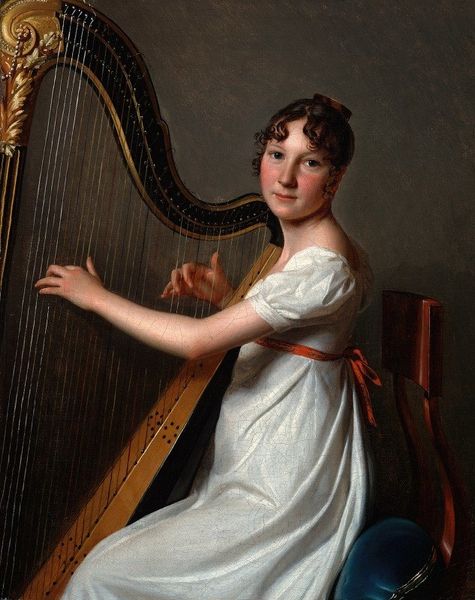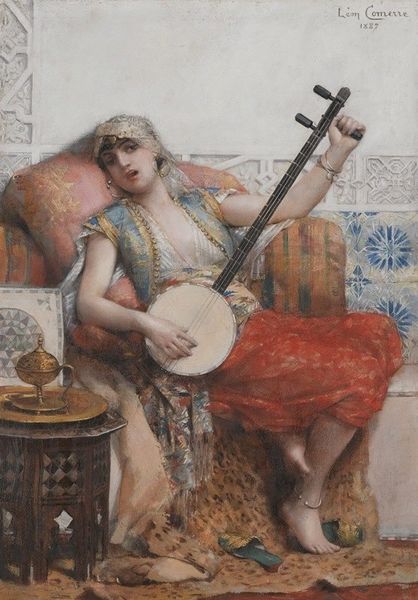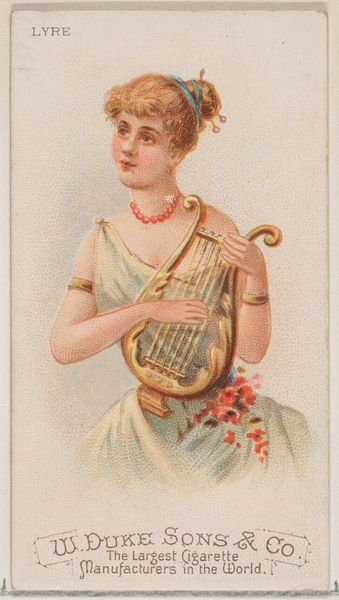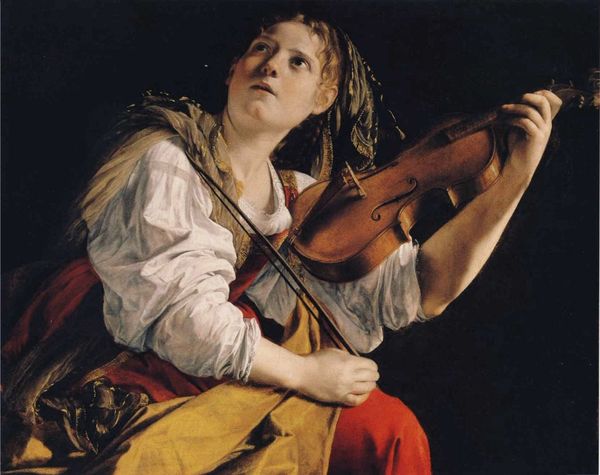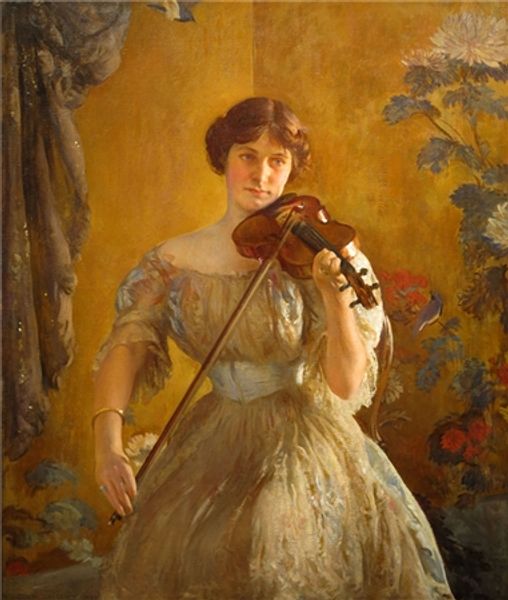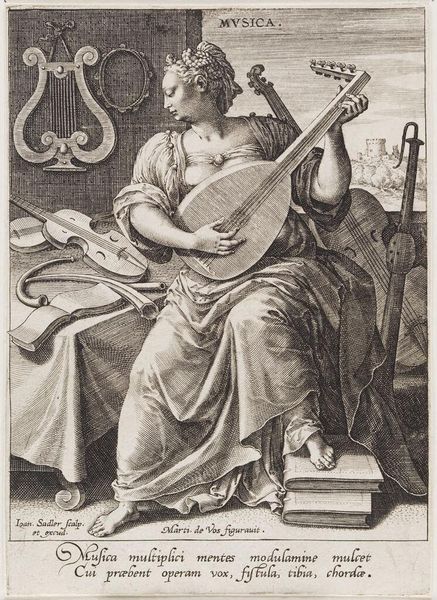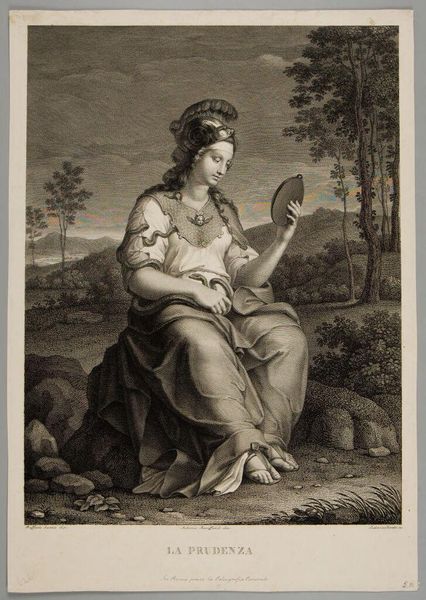
painting, oil-paint
#
portrait
#
allegory
#
baroque
#
painting
#
oil-paint
#
figuration
#
oil painting
#
history-painting
#
musical-instrument
#
academic-art
#
portrait art
Copyright: Public domain
Curator: This oil painting is titled “The Muse Calliope," created around 1652 by Eustache Le Sueur. My initial reaction is one of tranquility, it's such a calming portrait! The oval composition seems to cradle the subject. Editor: Yes, and note how that oval shape, almost like an egg, encloses the representation of feminine power, which often went unacknowledged. Calliope, as the muse of epic poetry, was essentially the voice of grand narratives and the cultural memory in ancient Greece. What do you make of the crimson cloth? Curator: It strikes me as almost… discordant? A flash of passion, disrupting the serene backdrop and Calliope's contemplative mood. Maybe it represents the potent emotions that fuel great stories. I wonder, did Le Sueur consciously choose such an unusual medium for a historical painting? The brushstrokes almost seem hurried compared to her delicately rendered face. Editor: That contrast could highlight the tension between divine inspiration and mortal execution, between the ideal and the real. Red, historically, has often been tied to power, revolution and even violence. Given the role of history painting in the 17th century, this could be a comment on whose stories get told and how. Curator: Hmmm... you have given me pause for thought, I had only considered the artist as a medium of creative power! This contrast raises so many possibilities. Perhaps it hints at the sacrifices inherent in creativity, or the fiery emotions artists channel. Editor: Indeed, the piece prompts reflection on how art, particularly history, has often been mobilized for cultural and political aims. We must question these underlying narratives, seeking to amplify voices historically marginalized within such representations. Curator: What an interesting new way of approaching the subject; the layers within "The Muse Calliope" feel so expansive now, filled with many more subtle notes. I will return to this one. Editor: Agreed; the work invites us to continually reassess the past, keeping in mind its relation to contemporary struggles and possibilities for reimagining and restorying it.
Comments
No comments
Be the first to comment and join the conversation on the ultimate creative platform.
